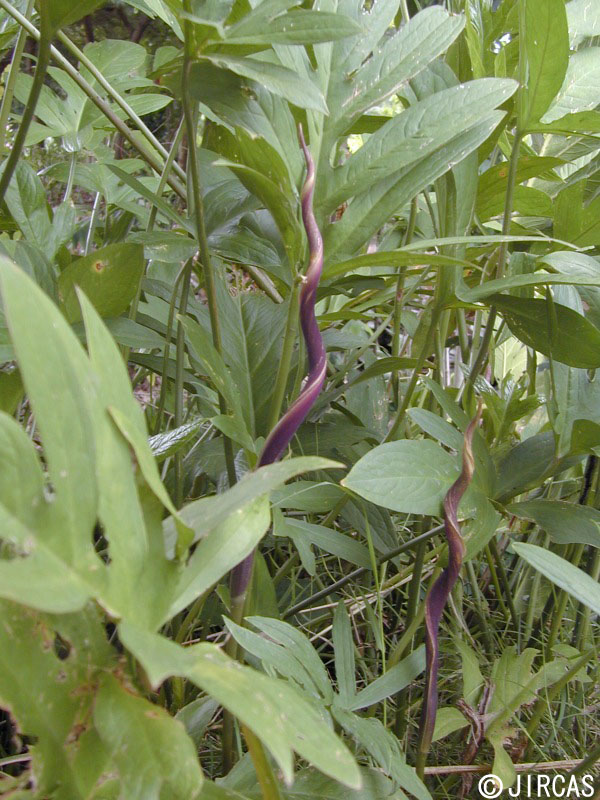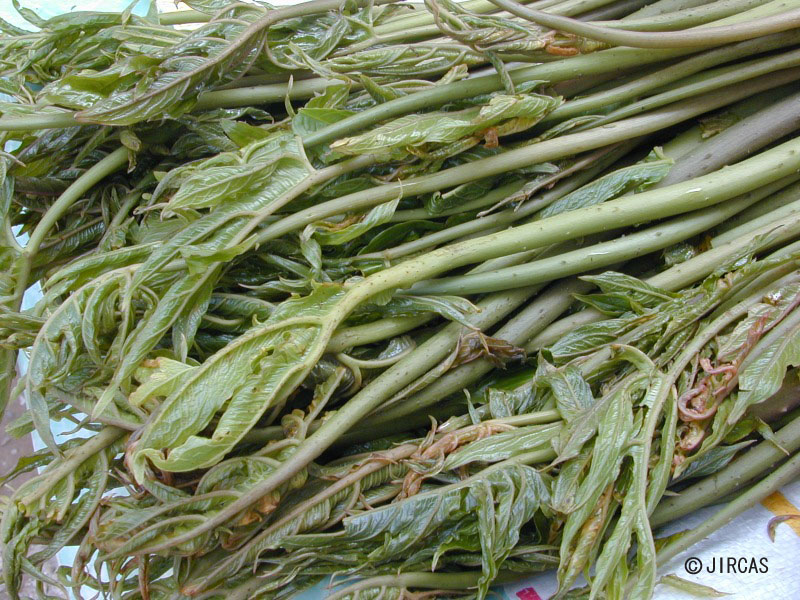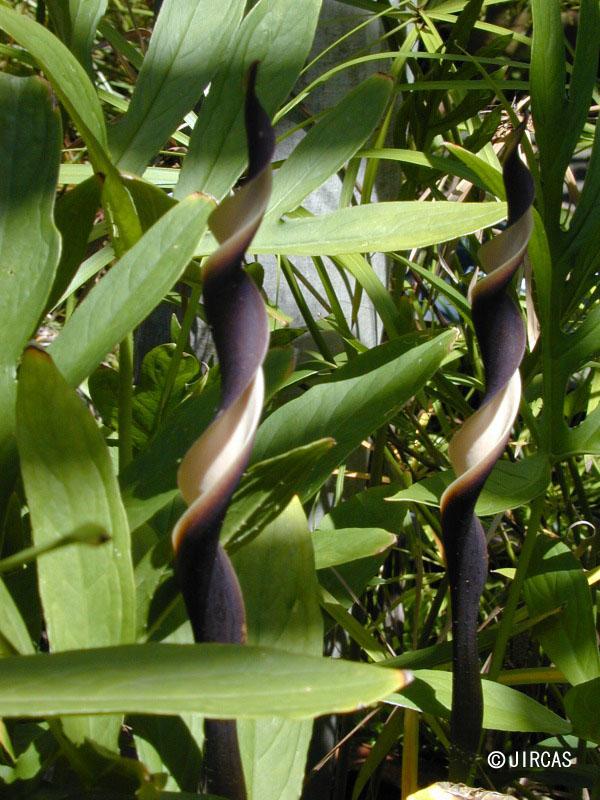Lasia spinosa Thw. (Araceae)
- Scientific name
- Lasia spinosa Thw.
- Family name
- Araceae
- Common name
- Lasia (English) ; mizuyatsude (Japanese)
- Local name
- Phak naam
Herb, 40–120 cm tall, leaf stalk thorny. Leaves rosette, simple, lanceolate, sagittate, or pinnatipartite, thorny along veins, 30–45 cm long, up to 25 cm wide; petiole 20–50 cm long. Spathe twisted, opening only at base, 15–30 cm long, brown or purple; spadix cylindrical, up to 6–8 cm long and 3–3.5 cm wide; peduncle thorny. Berry obovoid, muricate at the top, 1 cm long; seed 5 × 3.5 mm.
- Traditional medicinal use
- Functionality
- Functional constituents
- Note: Traditionally, water from boiled roots is used to bathe newborn babies.
Widespread throughout Thailand; particularly common in moist, shaded areas along rivers in evergreen forests. Occasionally grown for family consumption, but usually wild plants are collected for family consumption.
Young leaves are cooked or fermented to neutralise their hydrocyanic acid content, and then eaten with nam phrik pla ra (dipping sauce with fermented fish), cooked in hot and sour soup, or fried.
Caution: Must not be eaten raw; all parts of the plant contain highly toxic prussic acid, which is hydrolysed to form lethal hydrocyanic acid.
Young leaves are cooked or fermented to neutralise their hydrocyanic acid content, and then eaten with nam phrik pla ra (dipping sauce with fermented fish), cooked in hot and sour soup, or fried.
Caution: Must not be eaten raw; all parts of the plant contain highly toxic prussic acid, which is hydrolysed to form lethal hydrocyanic acid.






